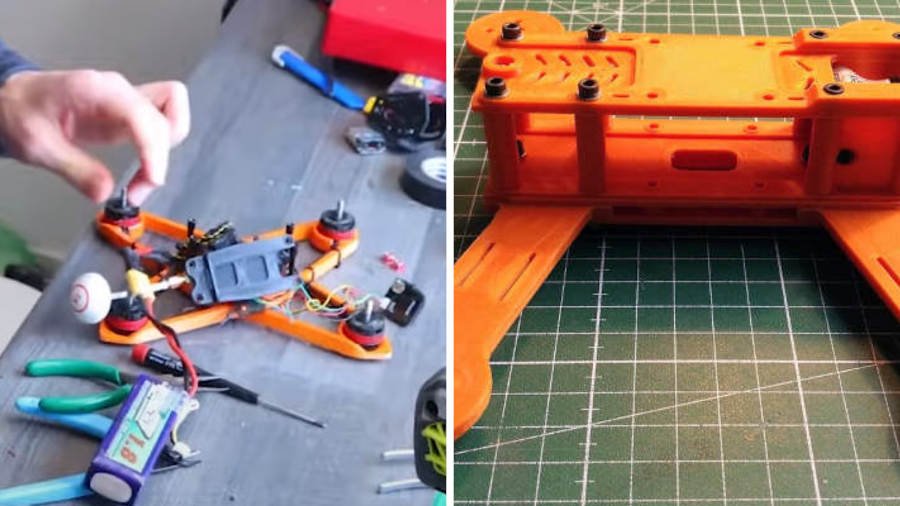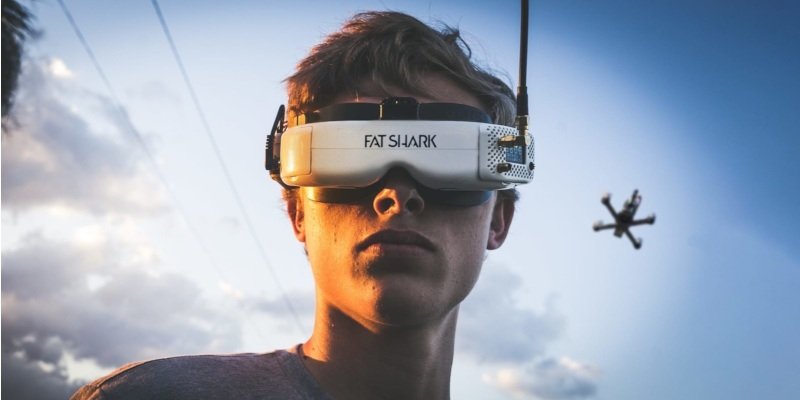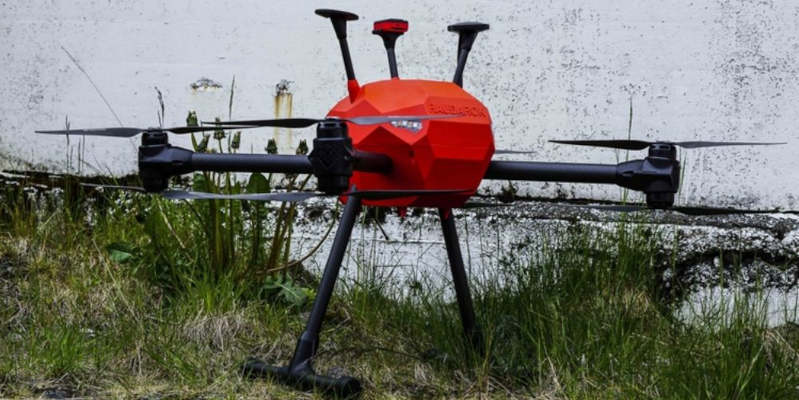
3D Printed Drones: 3 Ways To Print Your Own


At 3DSourced we’ve covered everything 3D printing and 3D since 2017. Our team has interviewed the most innovative 3D printing experts, tested and reviewed more than 20 of the most popular 3D printers and 3D scanners to give our honest recommendations, and written more than 500 3D printing guides over the last 5 years.
Since their inception, drones, and 3D printed drones, have advanced rapidly in both their capabilities and popularity. Today, drones are used across the US for film production, search and rescue, defense, and increasingly for simple recreation. Fortune Business Insights predicts the drone market will grow to $8.53bn by 2027, a more than 5x growth from the $1.59bn 2019 market size figure.

Throughout all of this growth, drones have largely been manufactured conventionally. They are most commonly made from metals, carbon fiber, or plastics. However, 3D printing has increasingly found its way into the production processes of several drone manufacturers.
3D printing brought with it various advantages, with the technology beginning to change the way drones are designed, built, and even their level of accessibility.
Whether you’re building your own racer, using a service, or are at the forefront of R&D, the following three projects will help us to see exactly what kind of impact 3D printing has had in the cutting-edge world of drones.
Why Do People build their own 3D printed Drones?
People will build their own drones for a variety of reasons; to better understand the devices, to customize them for specific tasks, to attempt to save money, or even simply because building drones can be really fun.

Despite DIY drone building being a growing sector of the market, it’s also a small sector. Largely because building your own drone is far from the easiest or cheapest way of getting airborne, even with the use of 3D printing.
Drones can be purchased across a variety of price points and applications, with high quality camera drones easily costing over $2,000 each. However, to illustrate why so few are ever self-built, let’s look at the cheaper side of the market.
Handheld camera drones, sometimes referred to as “toy drones,” can be purchased for under $50. However, building this type of drone yourself, even with 3D printed parts, requires some equipment. Usually a soldering iron, general hand tools, and of course, a 3D printer.
Even without a 3D printer, the tools needed to build your own drone will likely already cost over $50. Adding the additional cost of the final drone’s components and frame, and we can begin to see why DIY drones are rarely ever a cheaper, and therefore accessible, option.
However, 3D printed drones have some uses. In fact, as we’re about to see, certain disciplines within the drone market place a strong emphasis on self-made and modified drones, allowing 3D printing to have a far larger impact.
1. 3D Printed Drones for Racing & Freestyle
Freestyle and racing drones represent a niche, but rapidly growing sector of the drone market.
Both disciplines set themselves apart by requiring high performance drones that are incredibly powerful, fast, and light.
These pilots will also typically use FPV (First Person View) goggles linked to cameras on their drones, affording them better control and the sensation of direct flight.

This enhanced control allows racers to stay competitive. It also allows freestyle pilots to capture footage both at speed, and with agility, allowing them to keep pace with subjects moving in complex ways.
For example, the popular freestyle drone pilot “Johnny FPV” has released footage of his drones keeping pace with drifting cars, diving down tower blocks and mountain ranges, and maneuvering around speedboats.
FPV drones are actually available for retail purchase, however, there are a few reasons why pilots will prefer to either build them themselves, or purchase kits that they can assemble themselves.
Because Crashing 3D Printed Drones Isn’t as Expensive
The main reason is simply that freestyle and racing pilots are far more likely to crash their drones than general users. Although crashing becomes less frequent with experience, it is still an accepted and almost inevitable part of these disciplines.
FPV drones are often designed to be light, allowing them to be both fast and nimble. This however also makes them fragile, and means that most crashes will result in damage.

A drone’s propellers and frame are most likely to be damaged in a crash. Less often but still frequent is damage to the drone’s electrical components, which usually need to be replaced if damaged.
Additionally, should the drone crash in water, then most of the electronics will likely be destroyed outright through short-circuiting. And should the drone crash whilst speeding down mountain ranges (often known as “ridge diving”), buildings, or other hazardous terrain, then the entire drone will likely be lost.
Frequent damage means that parts will need to be replaced or repaired just as frequently. Ironically, this regular need for replacement parts has also make self-building cheaper than buying these drones outright, with the additional cost of tools and solder quickly paying for themselves every time a part needs to be replaced.
Crashing drones is still very expensive, just not quite as expensive as replacing the entire vehicle. However, the cost of crashing is a problem that the introduction of 3D printing can now assist with.
3D Printed Drone Parts
Drone propellers (often referred to as “props,”) are relatively inexpensive to replace. Frames however can easily cost between $60 to $140.
Although most crashes won’t require the entire frame to be replaced (sometimes duct tape will do), regularly buying replacement parts can easily add up to this.

However, pilots who own 3D printers can simply print their own replacement parts. It’s lucky then that out of all the components that go into drones, props and frames also happen to be the most widely and easily 3D printed.
3D printing drone parts is incredibly cheap. The material cost of reprinting an entire new frame rarely exceeds $5, making even the most extensive repairs far cheaper than buying replacements.
Then Why Aren’t All Drones 3D Printed?
Although the use of 3D printing is growing in these disciplines, it is held back from becoming standard practice. Much like how it is too expensive for general consumers to buy all the tools needed to build their own drones, FPV pilots often find it overkill to purchase a 3D printer specifically to print frames.

For some, this will be a simple matter of cost, whereas for others it isn’t worth the time investment. Designing and 3D printing drone parts takes both skill and experimentation, with pilots usually having to experiment with various materials and infills before getting exactly what they want.
Although this can be part of the hobby’s fun, for others it’s just an unnecessary step that can be avoided by ordering a carbon-fiber replacement. (And with more practice on the simulators.)
How Has 3D Printing Changed Drone Design and R&D?
Although the accessibility of 3D printing has made it a valuable tool for drone builders, as we’ve seen it’s less popular with retail drones.
Plastics, metals and carbon-fiber are used in these drones because the materials are light, strong, and pleasing aesthetically. Although metals and carbon-fiber can be 3D printed, the technology isn’t advanced enough to challenge conventional techniques currently used. However, this doesn’t mean that 3D printing isn’t a significant part of the drone production process.
Instead, and much like our next project, 3D printing often plays an important part in the design and R&D process, and is even being used in drones that will never be available in a 3D printable format.
2. Clogworks Dark Matter Drones
Clogworks is a drone R&D and manufacturing company founded in Yorkshire, England. They are best known for their “Dark Matter” series of drones, and specialize in producing drones for industrial, commercial, and security operations, rather than for private consumption.

Rather than using conventional methods to produce prototypes and models, Clogworks 3D print drones instead. Whilst discussing their process, Peter Opdam, the company’s co-founder, stated that:
“3D printing allows us to create a part [and] test it, without being restricted to having to create large volumes of parts… It’s a big improvement, it means that we can produce our own parts, test and look at them. We don’t have to involve a third party to produce a product that usually ends up not being exactly like the way I wanted.”
3D printing is an established part of many R&D processes, with the drones of many NATO militaries being designed and developed using 3D printing. What cases such as Clogworks show us, is just how close 3D printing is to becoming the standard process. If 3D printing continues to grow in efficiency, then it’s likely that all drones could eventually be designed using 3D printing, even if they end up being made of carbon-fiber.
How is 3D Printing Used in Service Drones?
So far, we’ve explored how 3D printing is used in consumer drones. Despite the advantages it provides in terms of customization, cost reduction, and R&D efficiency, it isn’t beneficial enough to replace the conventional production methods used today. However, what changes when the drones aren’t for purchase, but are instead used for services? Our final project may provide us with an answer.
3. The Svarmi Rauðarok
Whereas Clogworks uses 3D printing for their drone production, Svarmi uses 3D printing to optimize the service potential of their drones. The Icelandic company provides remote arial sensing and data collection for clients such as architects and researchers.
To provide this service Svarmi’s drones often have to be customized to meet the needs of their clients. During an interview, they stated that:
“Our product development is based on our customer’s requirements. We design our drones according to their wishes or integrate the sensors they require for very specific remote sensing missions.”

Svarmi uses fixed-wing and multirotor drones equipped with custom sensors to complete their missions. Their previous model of multirotor drone was built using CNC cut carbon fiber. Seeking to upgrade, they decided to redesign their multirotor and made extensive use of 3D printing. The result was their Rauðarok drones, which they are still using today.
How 3D Printing saved the buisness
The Rauðarok features a completely 3D printed frame, with metal legs and supports. The new design is lighter, has less components, and can be produced and modified much faster than its carbon fiber predecessor.
“The resulting drone was a great success, to say the least. The number of components was reduced by a factor of almost 6. And the time to assemble the drone went from being almost two weeks to two days including all the soldering required.”

As a service-based company this faster production speed meant that they could take on more clients. This, in addition to the fact that Rauðaroks were cheaper to produce, allowed them to take home more revenue. This profit boost dramatically shifted Svarmi’s fortunes, with the company later admitting that 3D printing essentially saved their business.
“We often need to design complex three-dimensional parts that before would just have been way too expensive to manufacture… Without 3D printing, Svarmi would not have been able to survive, it’s as simple as that.”
The 3D Printed Drones of Tomorrow
These three 3D printing projects show off the latest advances in 3D printing drones, and how they’re creating new opportunities for drone use.
3D printing offers drone makers a cheap source of replacement components. Designers with an excellent prototyping tool, and service companies a far more efficient way of modifying their vehicles. Currently, the only thing stopping 3D printing from becoming the industry standard, is the effectiveness of conventional methods.Though, this could easily change as 3D printing and drone technologies continue to…take off.



















